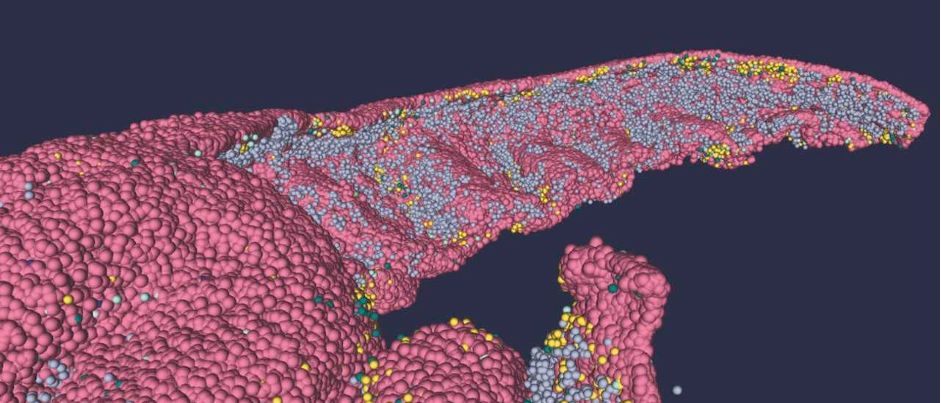
New full-scale 3D structural model of the human hippocampus available on EBRAINS

A new high resolution model of the CA1 region of the human hippocampus has been developed by the Institute of Biophysics of the Italian National Research Council (CNR-IBF) and University of Modena e Reggio Emilia (UNIMORE). The single-cell resolution model, which replicates the structure and architecture of the area, along with the position and relative connectivity of the neurons, was developed from a full-scale dataset of high resolution images. The model is now available on the EBRAINS Knowledge Graph. According to the study, published in Nature Computational Science, the same methodology could be applied to generate full-scale models of other human brain areas and also to be integrated in a co-simulation environment such as the The Virtual Brain.
“The amount of data on individual neurons of the human brain is very limited, both in terms of relative 3D coordinates and in terms of connectivity among neurons” explains Michele Migliore from CNR-IBF, Palermo. “We have performed a data mining operation on high resolution images of the human hippocampus, obtained from the BigBrain database. The position of individual neurons has been derived from a detailed analysis of these images”.
The researchers have developed a customized image processing algorithm in order to obtain a realistic distribution of neuronal positioning, and an algorithm to generate neuronal connectivity by approximating dendritic and axonal shapes. “Dendrites and axons can be classified into categories depending on the general shape of their extensions: for example, some fit into narrow cones, others have a broad complex extension that can be approximated by dedicated geometrical volumes, and the connectivity to nearby neurons changes accordingly” explains Daniela Gandolfi from UNIMORE, lead author of the study. “Our algorithm analyzes high resolution images and, after the creation of specific geometrical shapes to be associated with morphological properties, allows us to calculate the probability that two neurons are connected. The method provides not only the 3D positioning of neurons, but also their connectivity”.
“We compared the density of neurons in our 3D model with existing literature on the hippocampus, and found that it matches experimental observations, validating our model” concludes Gandolfi. “Our main goal with this study was to make the data readily available (to) the broader neuroscience community. We are now using the same approach to model other brain regions”.
News & events
All news & events- News23 Jul 2024

- 09-14 Dec 2024
Erice 2024 - Modelling the brain in health and disease: theory and applications of digital twins
Event
- Event

- Event
